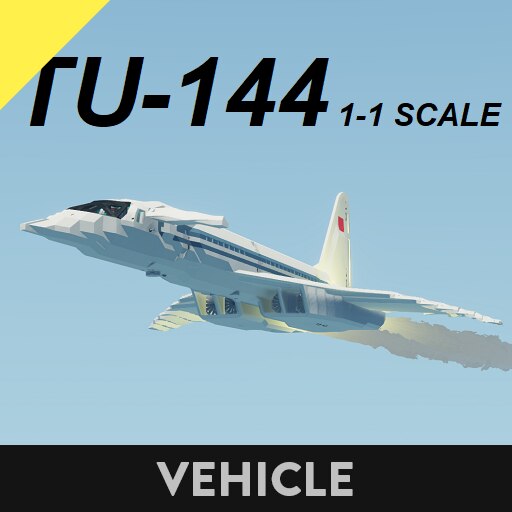TU-144
The Tupolev Tu-144 (Russian: Tyполев Ту-144; NATO reporting name: Charger) is a Soviet supersonic passenger airliner designed by Tupolev in operation from 1968 to 1999.
The Tu-144 was the world’s first commercial supersonic transport aircraft with its prototype’s maiden flight from Zhukovsky Airport on 31 December 1968, two months before the British-French Concorde. The Tu-144 was a product of the Tupolev Design Bureau, an OKB headed by aeronautics pioneer Aleksey Tupolev, and 16 aircraft were manufactured by the Voronezh Aircraft Production Association in Voronezh. The Tu-144 conducted 102 commercial flights, of which only 55 carried passengers, at an average service altitude of 16,000 metres (52,000 ft) and cruised at a speed of around 2,200 kilometres per hour (1,400 mph) (Mach 2). The Tu-144 first went supersonic on 5 June 1969, four months before Concorde, and on 26 May 1970 became the world’s first commercial transport to exceed Mach 2. -Wikipedia
————————
This plane has an auto flight engineer system which is capable of starting the plane up automatically and managing the F/E’s panel during flight. To use it, press the locked button on the overhead panel and select which stage of flight you desire (before start, engines running, cruise) and it will automatically perform to that state. To shut down the plane simply turn off the locked button and systems will turn off. The auto flight engineer is completely optional and you can still operate the flight engineer’s station manually, but it makes things a lot easier and quicker.
Startup Procedure This is for people not using the auto flight engineer system 1). BATTERIES- ON 2). APU MASTER- ON 3). BUS TIES/APU GEN- ON 4). HYDRAULIC SYS A/B- ON 5). ELECTRIC HYD PUMP- ON 6). APU BLEED/ISOLATION VALVE- ON 7). TANK PUMPS- ON 8). BOOST PUMPS- ON 9). GENERATOR BUS SWITCHES- ON 10). HYDRAULIC PUMPS 1-4- ON 11). ANTICOLLISION/NAV LIGHTS- ON 12). PACK SWITCHES- OFF 13). ENGINE BLEED AIR SWITCHES- ON 14). (START ENGINES USING START PANEL ON RIGHT) 15). PACKS- ON Turn off the APU and APU bleed once you are in the air but remember to turn them back on before landing. Also, the INS switch on the overhead panel must be turned on whether or not you are using the auto F/E. This checklist gets the plane running but there are still some systems (not needed for flight but important) the pilots have to activate. They are just basic things like the flight directors, lights, fuel trim, and autopilot setup.
Flight Procedures -Takeoff throttle is around ~60. Any throttle setting higher than that should be flown with the autopilot engaged -Once you take off, you can either manually turn off the APU, or if you are using the auto F/E, select cruise mode. The APU must be on during takeoff and landing because the engines don’t rev high enough to produce power at idle, but in flight it just wastes fuel. -For long distance flights, a cruise altitude of 2000 feet works well. -Start your descent around 30km away from your airport, first down to 1000 feet at 100 throttle and then down to 700 feet. At this point you can lower the nose to increase visibility and slow down to below 250 knots. -This plane has a Vref (approach speed) of ~170-180 knots. Lower the landing gear once you start your final approach towards the runway.
Autopilot -To engage or disengage the autopilot, press the spacebar or use the buttons on the yoke to individually activate pitch and roll channels. -LNAV targets the GPS coordinates entered in the overhead panel. It will fly towards the waypoint inputted into the keypad if the VOR/AUTOPILOT switch is off, and if it is on then it will fly any flight plan you enter into the waypoint queue. -G/S and autoland systems function normally but unfortunately due to this plane’s unique design autoland capabilites are not present at the Arctic, Multiplayer, Plateau, or Creative Base airports (you can try but you’ll probably crash). -ND stands for navigational display and is there to show what the autopilot wants to do. The dial points in what direction the plane wants to go and the gauge tells you your distance to where you are going. Selecting "Auto" displays whatever autopilot channel is active, selecting "ILS" displays what the ILS systems want to do along with your distance to the set runway (only if the G/S button is on), and selecting "Distance to 0,0" points in the direction of 0,0 and tells you your distance from it.
Plane also features mach .77 top speed, enough fuel for an arctic round trip, LNAV, failure simulations, and autoland capabilities. Parachutes coming later
This doesn’t require the weapons DLC but the Explosion and Fuel Leak features need warheads to work.
Credits:
Radar System
Heading Hold
GPS Autopilot
Waypoint Queue
This can be spawned through an edited workbench or a custom mission. If you have any issues let me know


